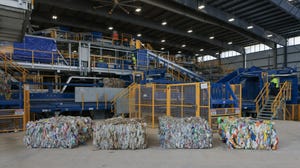Designing through the Lens of Circularity

The Industrial Designers Society of America (IDSA) hosted the first webinar in its “Close That Loop!” series. This event focused on “Circular Business Models” and explored the role of design teams in building a circular economy—as well as the related business challenges and opportunities. The panelists were Bridget Croke, Managing Director of Closed Loop Partners, and Anna Queralt Fuentes, Engagement Manager of the Ellen MacArthur Foundation, in conversation with Philip White, Professor at Arizona State University.
Fuentes began the discussion by elaborating on three principles of the circular economy: eliminating waste and pollution; keeping products and materials in use; and regenerating natural systems. She emphasized that design plays an important role and that important decisions made during the design phase are sometimes “hard to reverse,” with far-reaching—and sometimes unintended—impacts.
Fuentes recommended designers try a simple exercise when working on any new project: first, “zoom in” to the users’ needs, then “zoom out” to the system to see how different elements are interconnected and what relationship the elements have throughout the process of creation and delivery. For example: “If someone changes the material of a single-use bottle, the end user is still responsible for doing the right thing” after use. So, Fuentes asked, “Where can we intervene to create the vision we have of a circular system?” The answer lies in combining vision and strategies with design. Some useful and relevant strategies include: modularity, reparability, upgradability, standardization, and embedding intelligence.
Fuentes then showed the audience an example of circular design strategies for the built environment. She highlighted the work of a Danish company that designs houses that can be dis- and reassembled, and utilize a take-back system. This means that, “You sign a contract saying that when you no longer want the house, the company will buy it back from you for a percentage of what you paid.”
Next, Croke discussed how her firm has “identified a strong need for investment, to drive scalability” (and de-risk innovation), in circularity. And she echoed Fuentes in noting that designing through “the lens of circularity” is critical. She cited four drivers of circular business: investment, innovation, policy, and partnership. And she emphasized the need to “design for value across the system—for brand, consumer, and recycler.” When thinking about a circular innovation, we often think, “What will we need the consumer to do that’s less convenient?” But, Croke noted, “We are now seeing innovations that actually make the consumer experience better.”
In talking about the concept of “waste,” Fuentes shared how her foundation defines the term: “waste is ‘a design flaw.’” She went on to highlight additional examples of compelling circular design currently seen in the market. One such example is a company called Fairphone that offers dis- and re-assemblable, upgradable, and adaptable mobile phones. The company’s concept is to create new phones out of old phones, such that only reused metals are utilized. And, customers can upgrade their devices from the comfort of their own homes. For instance, if Fairphone introduces an improved camera for its phones, the consumer can order the modular camera component and swap it into their existing device. One challenge, Fuentes noted, “is that it’s not always easy to innovate with such strong competitors.”
Fuentes also shared about the foundation’s collaboration with 80 companies/partners (many of whom are normally competitors of each other) to create jeans that are completely circular. The jeans are designed to be used longer, remade again, made under better working conditions, and better for the environment. A project like this shows “how collaboration can enable circular economy to be a reality, through innovation.”
Another example of circular design that the speakers discussed is Ooho’s edible packaging made from renewable seaweed. This company focuses on packaging sauces in home-compostable sachets and has partnered with Just Eat, Hellmann’s, and Innovate UK to scale its efforts. “If you don’t eat the sachet, you still have to dispose of in the right place— but, food packaging that doesn’t look like something recyclable is a great place to start. “ The speakers encouraged designers to ask themselves and their clients, “Are we using the right materials for the right purposes?”
Croke elaborated on the edible-packaging idea by discussing a silk protein from a company called Mori that creates a thin, edible, benign covering for food to extend shelf life. In the past, people may have thought, “Well you’re either going to have food waste, or plastic waste.” But, Croke pointed out, this is “not necessarily true” anymore—and designers can help go against this binary way of thinking.
As Fuentes put it, “We’re not going to get it right the first day; it’s all a journey, but we need to get started. What can work for what context, and what can be improved to see what can work in other contexts?”
About the Author(s)
You May Also Like




